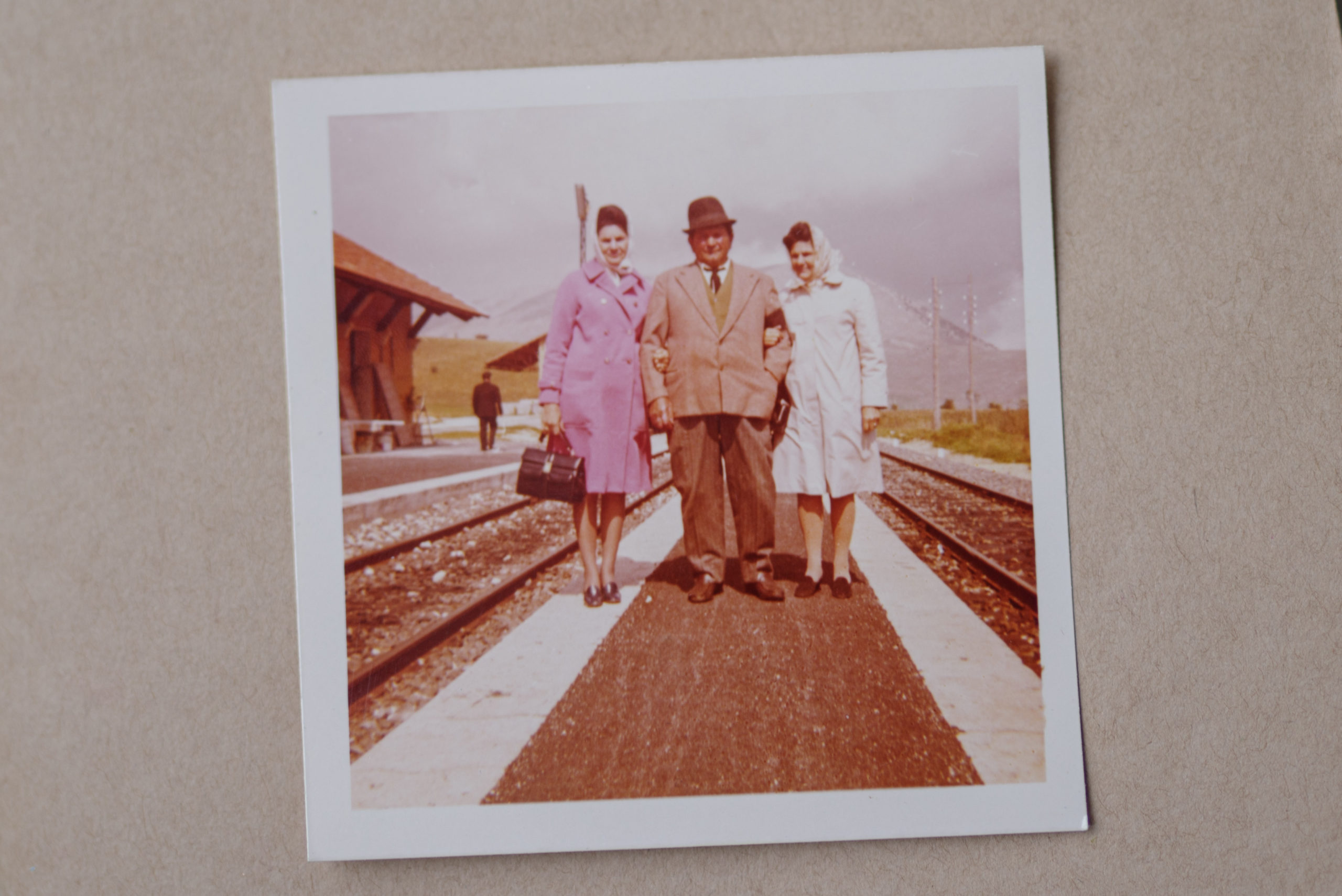I had never heard of artist/critic Andrew Forge when I ordered a collection of his writings on art a few years ago. I still don’t know what possessed me to make the purchase other than, perhaps, a deal of some sort (spend this much and get free shipping, maybe). The book, and those that accompanied it in the box, did not come from Amazon. I think something on Twitter caught my eye and I ended up at Criterion Books.

Be that as it may, I am satisfied with my purchase, and while I am unfamiliar with most of the artists/works Forge’s essays deal with, I am learning a little about looking at art and getting inspired to be more intentional about my art practice. Hence, the following recent entry in one of my sketchbook/journals about an old picture of two of my mother’s sisters and the uncle they met on their trip to Italy (“the Old Country”):
The first essay in Observation: Notation is Andrew Forge’s catalogue introduction to an exhibit called “Measurement and Proportion.” He writes, “To measure a proportion is to set one interval against another, to relate like to like, and sooner or later, to abstract a structure of proportions from the whole complex that the eye sees.”
The image I have chosen as a bookmark for the Forge essays turns out to be an amazing study in proportion: Angie in her pink coat provides almost all the color in the photograph. Mary, too, stands out in her ivory coat, although the ivory is echoed (reinforced?) in the straight lines (borders of a path) that begin behind the three figures and come out to meet us. Uncle Americo’s hat makes him a hair taller than Angie in her kerchief, which keeps every strand of that massive bun in place atop her head.
The figures of my two aunts and their uncle at a train station in Italy are larger, in the foreground, than the distant, hazy mountain behind them. In fact, the cloudy sky and the mountain beautifully illustrate that rule of perspective in painting that advises just such bluish, soft tones for features that the viewer is supposed to read as far away. Other items in the picture include the utility poles, trees, train tracks, and a corner of the station. Then there’s the only other human depicted: the man walking away from the camera. Does he work there, is he killing time until his train arrives?
The timelessness of the image, which was taken in September, 1972, is marvelous. I’d never suspect that my aunts were traveling abroad in the 21st century, and I wouldn’t guess the 19th, either, but any number of 20th-century decades could be chosen.
Uncle Americo’s brown clothes and hat blend beautifully with the browns of the path, the stationhouse, the track bed, but there is a notion of green in his vest that could have come directly from the long grass and nameless vegetation leading the eye to the shoulders of that mountain: a mountain that won’t be moved, but seems to hold little importance in this world of having to get somewhere in the right shoes, the perfect pink coat, and the handbag that means stylish business.
